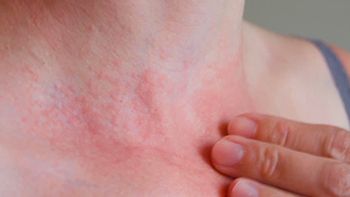Red Spots on Skin: Why They Happen and How to Nix Them
Red Spots on Skin: Why They Happen and How to Nix Them
How often have you spotted red spots on your skin? Well, don’t be alarmed if they occur again. The wisest thing to do is pay a visit to your doctor. This is because there can be many reasons behind them - from allergic reactions to other skin conditions. The underlying cause is hard to determine without medical examination.
In this article, we list out all the possible causes of red spots and their treatments for your knowledge

Your skin is the largest organ in your body. It protects your body and controls what gets in. Along with your hair and nails, your skin acts as a protective barrier against environmental toxins and injuries. It also releases toxins from your body through sweat, tears and mucus.
When there’s a break in the skin or a disease that causes the integrity of the skin to be broken, your whole body loses the ability to protect itself and prevent infections. Many infections — fungal, bacterial or viral — target the skin. They’re caused by exposure to pathogens, a compromised immune system or improper hygiene.
An Immediate Reaction
The two most common ways you know that something’s wrong with your skin are rashes and itches. Even though red dots on your skin are described as rashes, there are several variances that indicate different conditions. That’s why you need to rely on your experienced dermatologist at Century Medical and Dental Center in Brooklyn to correctly diagnose and treat any skin discolorations.
Red spots on the skin can vary greatly. They can appear as tiny red dots or a larger patch of red skin. The different manifestations of red dots on skin have different names, including:
- Petechiae are tiny, circular, raised patches due to bleeding under skin.
- Purpura refers to small, burst blood vessels.
- Urticaria, another name for hives, are swollen red bumps, usually due to a reaction.
- Erythema appears as a general redness on skin due to an increase in blood flow in the superficial capillaries.
- Telangiectasia refers to widened venules and spider veins.
More Obvious Causes of Red Dots
Depending on what they look like, where they are, when they occurred and if there are other associated symptoms, red spots have a number of potential origins. You likely know if you have a sunburn or allergic reaction, as in the case of contact dermatitis, because there’s a precipitating event. You can also pinpoint food and medicines that cause allergies.
Acne may have a trigger, but most of the time, it’s a blockage of hair follicles on your skin that causes a minor infection. It shows up mostly on your face, but can be found other places, like your back and shoulders.
Rosacea appears as redness around your nose and cheeks. Sometimes, you see it on your forehead and chin. It has no known cause, but it’s a condition that seems to run in families and may be immunologic. The appearance of red dots is common as you age and may simply be age spots.
Medical Basis for Red Dots on Skin
Some skin disorders have immunological or systemic origins like eczema, psoriasisor lupus. These conditions cause red dots, spots or rashes on the skin. Dermatitis is a general term for irritated skin and can be a symptom of a number of diseases. Herpes simplex virus can cause cold sores, which can look like red dots. The herpes zoster virus is the cause of adult chicken pox and shingles.
Serious medical conditions, such as toxic shock syndrome and toxic epidermal necrolysis, can cause red spots on your skin. Rare cancers can also cause rashes. If you experience sudden rashes or if the dots develop blisters, especially in your mucus membranes, see your doctor as soon as possible.
Telltale Symptoms Besides Red Spots
The number of red dots on your skin — as well as their location, size and appearance — and other associated symptoms can vary. This specific information guides your doctor toward a diagnosis. Some associated symptoms include:
- Itchy skin
- Dry skin
- Fever
- Dizziness or headache
- Trouble breathing
- Diarrhea
- Nausea
If symptoms persist for more than two weeks or you experience any troubling symptoms like vomiting, pustules, difficulty breathing or muscle weakness, see your Brooklyn dermatologist. You may need immediate attention.
Treatment and Prevention
Your treatment is based on your doctor’s diagnosis. You may start with topical ointments and creams, antibiotics or simple outpatient procedures, such as excision if there are no underlying issues. Emergency care is also available for severe allergic reactions. Since your dermatologist is part of a multi-disciplinary team at Century Medical and Dental Center, referrals for specialists in cases of a systemic illness are made within the same office.
Prevention, such as diet and proper hydration, helps you maintain healthy skin. Eat plenty of fruits, vegetables, vitamins and minerals. Protect your skin with proper sunscreen and protective wear. Submit to a physical exam when red spots on the skin appear. A simple, visual cancer screening exam detects potential pre-cancerous growths — and gives you peace of mind. Contact your practitioners today for an appointment to get this simple screening.


Comments
Post a Comment